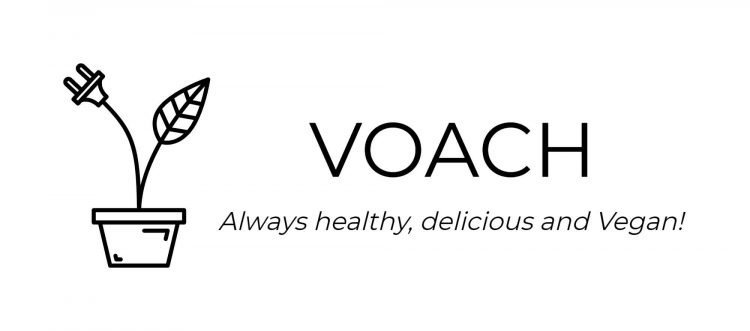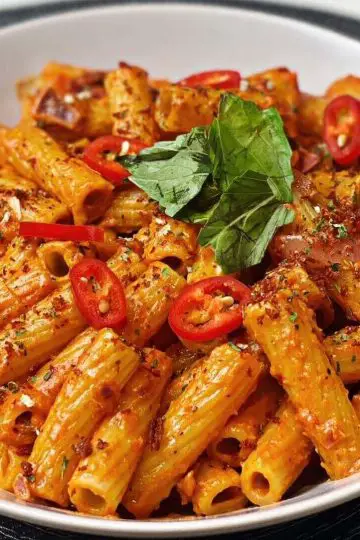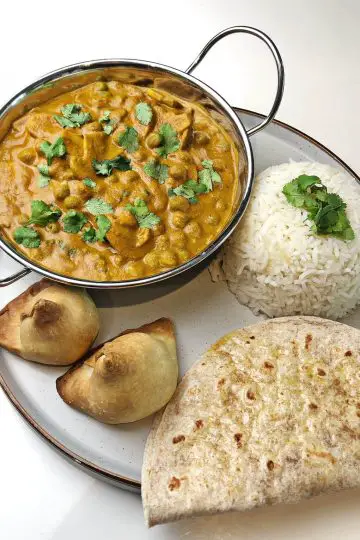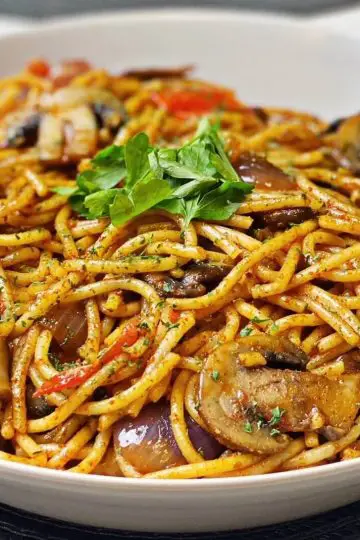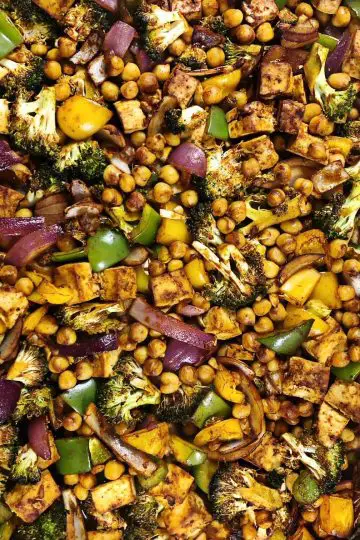When the topic of veganism comes up, these questions invariably follow: “Where do vegans get their calcium?”, “How do vegans make sure they get enough calcium?” and “Which vegan foods are high in calcium?”.
Whilst it may surprise some, milk and dairy products are not the sole source of calcium for humans. Unfortunately, due to the clever, persistent and expensive advertising campaigns by the dairy industry since the end of the Nineteenth Century [1, 2] – it has falsely been promulgated that milk and dairy products are necessary for people to get an adequate amount of calcium and to grow and maintain strong bones. Surely then, there must be mass problems with vegan calcium deficiency, right?
The truth of the matter is that you don’t need to consume milk and dairy products to get an adequate amount of calcium. You can get all the calcium you need straight from the same source the animals do – plants!
It’s time to dispel the dairy calcium myth once and for all.
Let’s get into the top 15 vegan sources of calcium – including the shocking Bonus Food that you would’ve never considered before!

*All figures are provided on the basis of a 100 gram serving and the US recommendations for daily calcium intake (DV%) for people aged 19-50 (being 1,000mg).
Top 10 Unfortified Sources of Calcium
1: Blackstrap molasses
Calcium content: 95% DV
2 thoughts may have crossed your mind when reading this:
- “What the hell is Molasses?”; and
- “How did Molasses come out at no.1?”
Blackstrap molasses is a thick syrup which is made from sugar cane through a process where it is boiled three times over. Through this process, the nutritional value of molasses is increased and far superior to that of regular sugar. It contains several essential vitamins and minerals in high quantities, some of which are important for bone health – all the while containing no oxalates and thereby not inhibiting the absorption of calcium in the body*:
Vitamin B6: 45.5 % DV | Copper: 105% DV | Magnesium: 118.8% DV | Manganese: 130.5% DV | Potassium: 61.1% DV | Selenium: 25.4% DV | Iron: 19% DV
As a syrup, it is easy to incorporate into your diet as a substitute for honey, maple syrup or agave syrup and get more calcium with your breakfast and snacks!
I should remind you that, as molasses comes from sugar cane, it is high in sugar. So don’t go guzzling it down just for calcium. One tablespoon will still give you approximately 20% DV of calcium!
* Quick note on oxalates/oxalic acid. Oxalic acid is a natural compound found in many types of food [3]. It is relevant to raise in this article as oxalic acid binds with calcium in the gut and reduces calcium absorption. Accordingly, foods with high oxalic acid content should not be considered good sources of calcium – but more on that later in the list!

2: Certain types of Seaweed
Calcium content: up to 60.6%
Calcium-rich plant foods pop up all over the planet, including the sea as there are certain types of seaweed that have tremendously high amounts of calcium.
Certain studies have shown that the sulphated polysaccharides (SPSs) in certain types of seaweed possess broad spectrum therapeutic and biomedical properties that are known to play a significant inhibitory role in calcium oxalate kidney stones [4].
Kombu: 60.6% DV | Laver Nori: 43% DV | Kelp: 16.8% DV | Wakame: 15% DV
It is easy to incorporate these types of seaweed into your diet and increase your daily calcium intake – whether to simply snack on, put in your salads and soups, or wrap around rice and vegetables (such as with sushi).
Always be sure to take care where you source your seaweed as due to ocean pollution, certain products can contain amounts of heavy metals [5].
It is also important to regulate your intake as seaweed has high levels of iodine which, in excess, can be harmful to the human body [6]. If you are concerned with iodine levels, then it is advised to boil the seaweed before consumption as this can significantly reduce its iodine content. For example, boiling Kombu for just 15 minutes can reduce its iodine level by 99% [7].
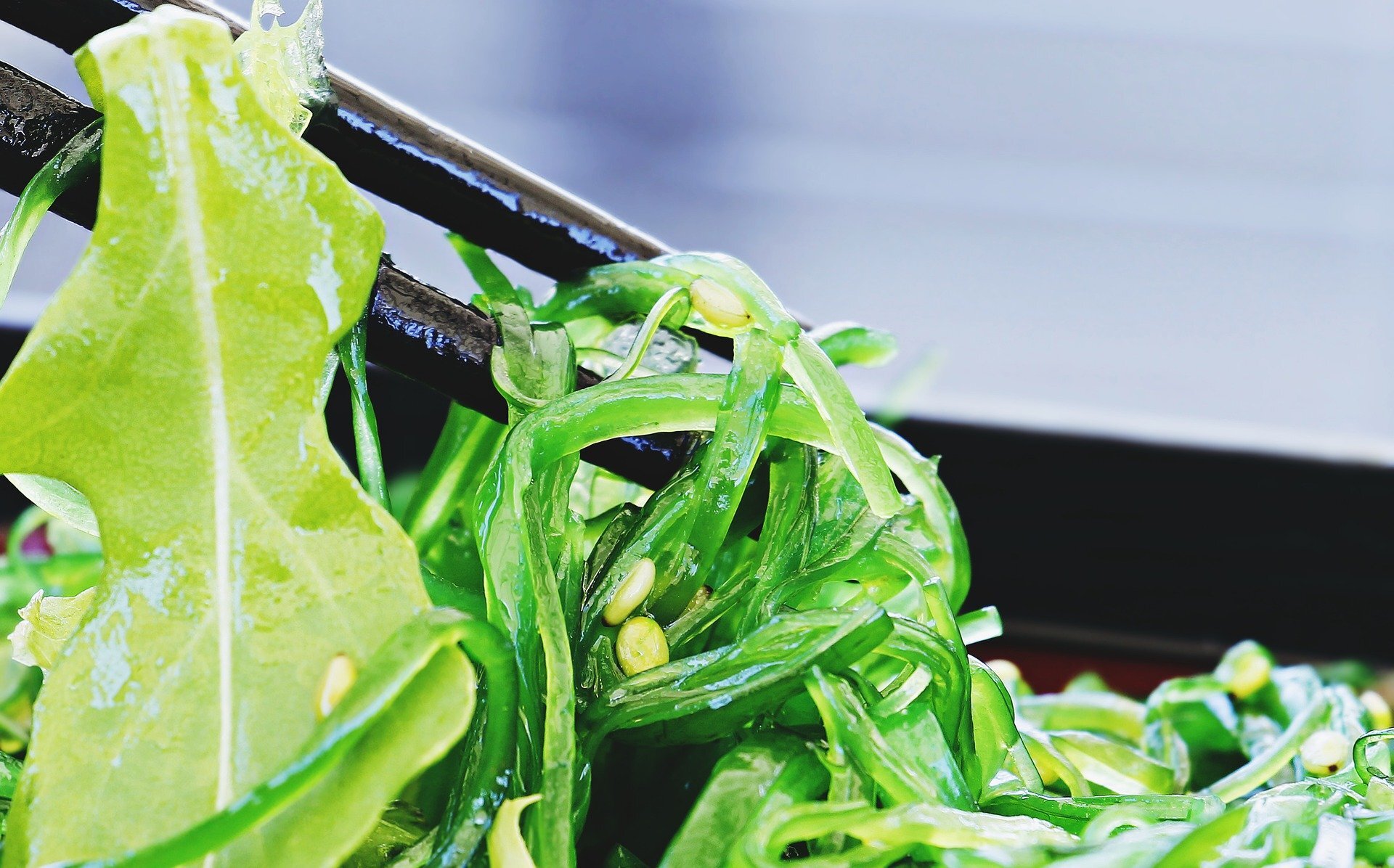
3: Soy Beans (inc. Tofu, Tempeh and Soy Milk)
Calcium content: up to 37.5% DV
Soybeans in their many varieties are an excellent source of calcium. They are also quite low in calories, high in protein and a good source of magnesium, which is necessary to maintain and build strong bones in the body [8]. In particular, as certain soy products are fermented (such as tofu and tempeh), their digestibility is increased which thereby increases nutrient absorption.
In fact, Alpro states that their products contains as much bio-available calcium** as dairy milk [9] and have higher amounts of Vitamin D (an essential vitamin to regulate the amount of calcium in the body). So no need to worry at losing out on calcium at breakfast time!
The amount of calcium can vary depending between products and their fermenting/processing methods, so you should always check the product you are purchasing to see if it is processed with calcium sulfate or nigari to get an accurate picture of its calcium content.
Extra Firm Tofu: 37.25 % DV | Firm Tofu: 26.7% DV | Natto: 21.7% DV | Soy Milk: 20% DV | Soy beans: 10.2% DV | Tempeh: 9.6% DV | Edamame: 6.3% DV | Miso: 5.7% DV | Silken Tofu: 4.2% DV
As you can see above, there are so many varieties of soy-based products that is easy to incorporate into any number of them into your diet and ensure you are meeting your daily calcium requirements – especially for those transitioning to a vegan diet and eating more comfort foods, such as soy-based meat and dairy alternatives (burgers, sausages, milk, cheese etc.).
*Soy Milk is the one exception of a fortified food in this top 10 as it is so closely related to the numerous other non-fortified sources of soybeans on this list.
** Bio-available calcium is another way to say absorbable calcium 🙂
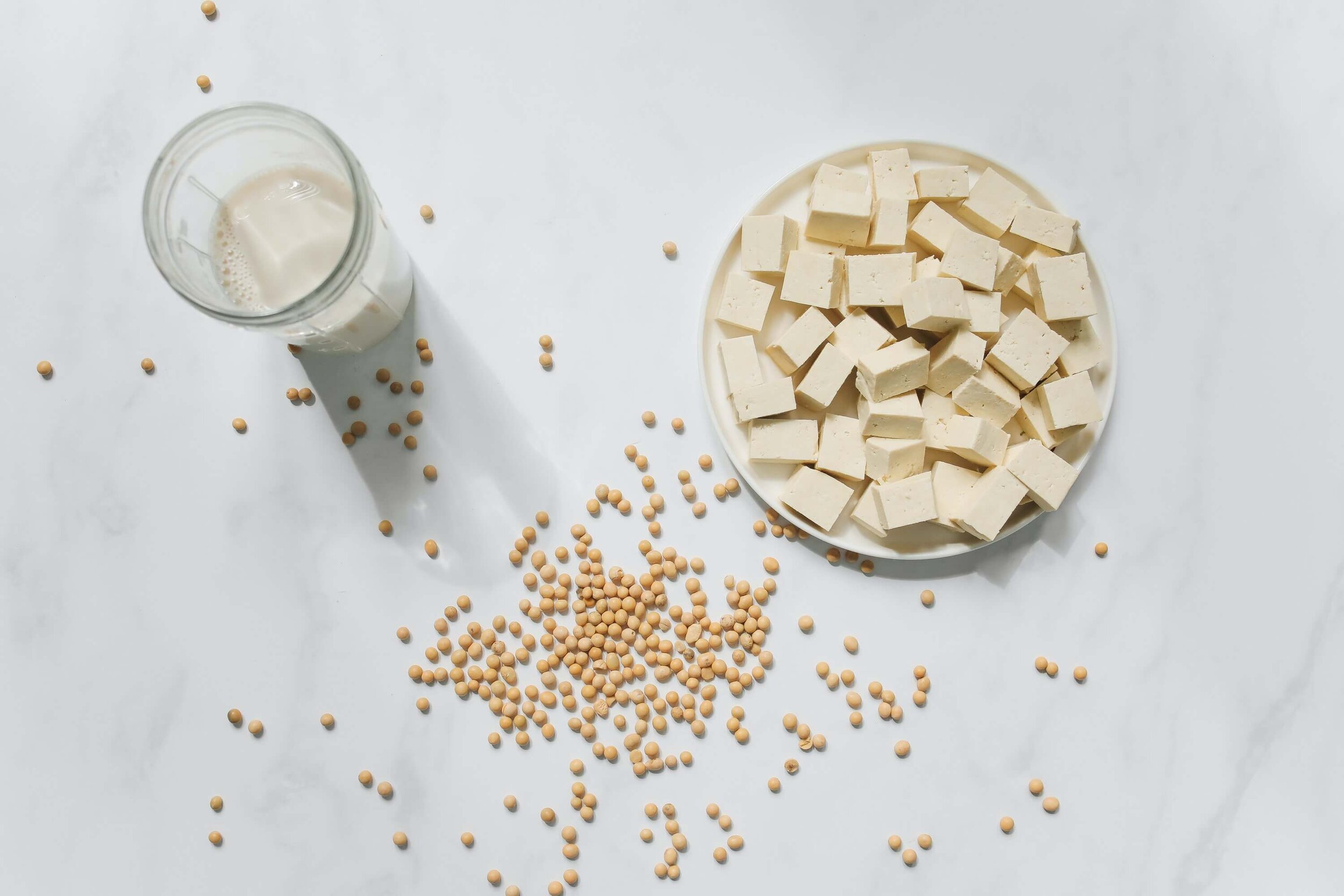
4: Seeds
Calcium content: up to 25.5% DV
Certain seeds can be another good source of bio-available calcium and are easy to add to the smoothies, salads and meals that you already enjoying. If you see any of my juice or smoothie bowl recipes, you will see that I love to add a teaspoon of Flaxseeds and Chia Seeds to give them a nutritional boost for Omega 3 Fatty Acids, as well as calcium!
Flaxseeds: 25.5% DV | Sunflower Seeds: 7.8% DV | Pumpkin Seeds: 5.2% DV
Poppy Seeds: 143.8% DV | Sesame Seeds (unhulled): 97.5% DV | Chia Seeds: 63.1% DV | Hemp Seeds (unhulled): 14.5% DV
You may have seen other lists for vegan sources of calcium and see Poppy Seeds and Chia Seeds as top source given their high DV%. However, this only tells half the story.
Such seeds are quite high in oxalic acid which limits calcium absorption. This is why such seeds are not in bold in the table above.
An an example, the calcium absorbed in the body from sesame seeds/tahini is roughly 1/5th of its calcium content – which is not as high as 97.5% DV above, but still a considerable amount at approximately 20% DV.
Does this mean you shouldn’t eat these seeds? No. As these seeds still provide a good amount of calcium (even after factoring in the absorption rate) and have other fantastic health benefits, they should definitely form part of any healthy and well-planned diet.
However, for the purposes of calcium absorption, Flaxseeds are my recommended choice given their high amount of bio-available calcium and selenium, iron, zinc and copper content (which are also important micronutrients for bone health) [10].

5: Certain Dark Leafy Vegetables
Calcium content: up to 16% DV
You may have been expecting the dark leafy greens to make an appearance on this list.
With their high calcium content and extremely low oxalate levels, the dark leafy greens listed below are a great source of calcium and should be a staple in any diet. In fact, the absorption rate of calcium in some of these greens are twice the amount of milk [11].
Arugula: 16% DV | Kale: 15% DV | Collard Greens: 14.1% DV | Turnip Greens: 13.7% DV | Watercress: 12% DV | Mustard Greens: 11.5% DV | Chinese Cabbage: 10.5% DV | Bok Choy: 9.3% DV
You may have seen foods such as Spinach, as well as Beet Greens and Chards, appear on other lists for top sources of calcium for vegans.
Unfortunately, the majority of calcium in spinach isn’t absorbed in the body as it has such high amounts of oxalates. In practical terms, only 5% of the calcium is absorbed, which is less than what you would get from eating the other foods on this list [12].
However, boiling your greens are the best way to reduce oxalate levels, as well as increase the absorption of calcium as it can reduce 30–87% of oxalates [13]!

6: Certain Nuts
Calcium content: up to 10.7% DV
Nuts can be a great snack to boost your calcium intake for the day, not to mention boosting other essential vitamins and minerals such as fibre, healthy fats, protein, antioxidants, B vitamins, magnesium, copper, potassium, and selenium.
Roasted Pistachios: 10.7% DV | Roasted Pecans: 7.2% DV | Roasted Peanuts: 5.8% DV | Roasted Chestnuts: 2.9% DV
Almond Butter 34.7% DV | Almonds: 26.9% DV | Brazil Nuts: 16% DV | Walnuts: 9.8% DV | Cashews: 3.7% DV
The downside with certain nuts (particularly almonds) is that they do have high oxalate levels and thereby limits calcium absorption. But don’t fear this too much and start throwing your almonds away!
Even with lower absorption levels, on a 100 gram basis for almonds, they provide roughly the same amount of bio-available calcium as certain darky leafy greens such as turnip greens.
Additionally, certain nuts are a great source of Vitamin K, which is an important vitamin for bone quality and density in the body.
For reasons similar to the seeds section, I would recommend pistachios and pecans for boosting calcium intake given their low oxalate levels compared to almonds and brazil nuts.
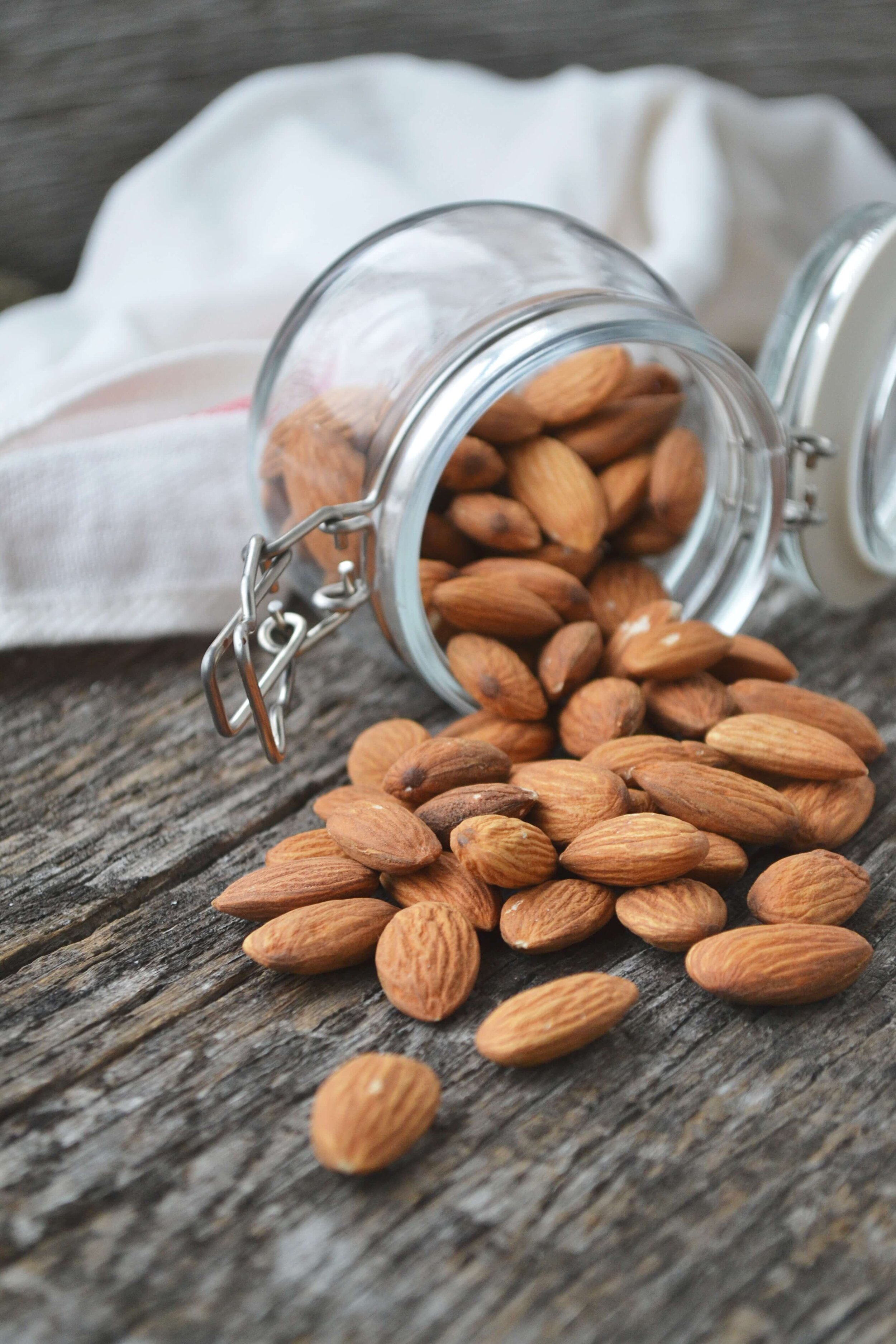
7: Certain Fruits
Calcium content: up to 16.2% DV
Wouldn’t have thought fruits would end up on this list, right?
Whilst the majority of fruits do not contain much calcium, there are a few notable fruits which contain a good amount of calcium and moderate to low amounts of oxalates.
Dried Figs: 16.2 % DV | Raisins: 6.2% DV | Blackcurrant: 6% DV | Dried Apricot: 5.5% DV | Oranges: 4% DV | Raw figs: 3.5 % DV | Kiwi Fruit: 3.4% DV | Blackberries and Raspberries: 2.9% DV
So if you are a little hungry and looking for a snack to boost your calcium intake for the day, I’d recommend having these fruits in your house!
Be sure to keep on reading this list to see oranges make another appearance on this list!
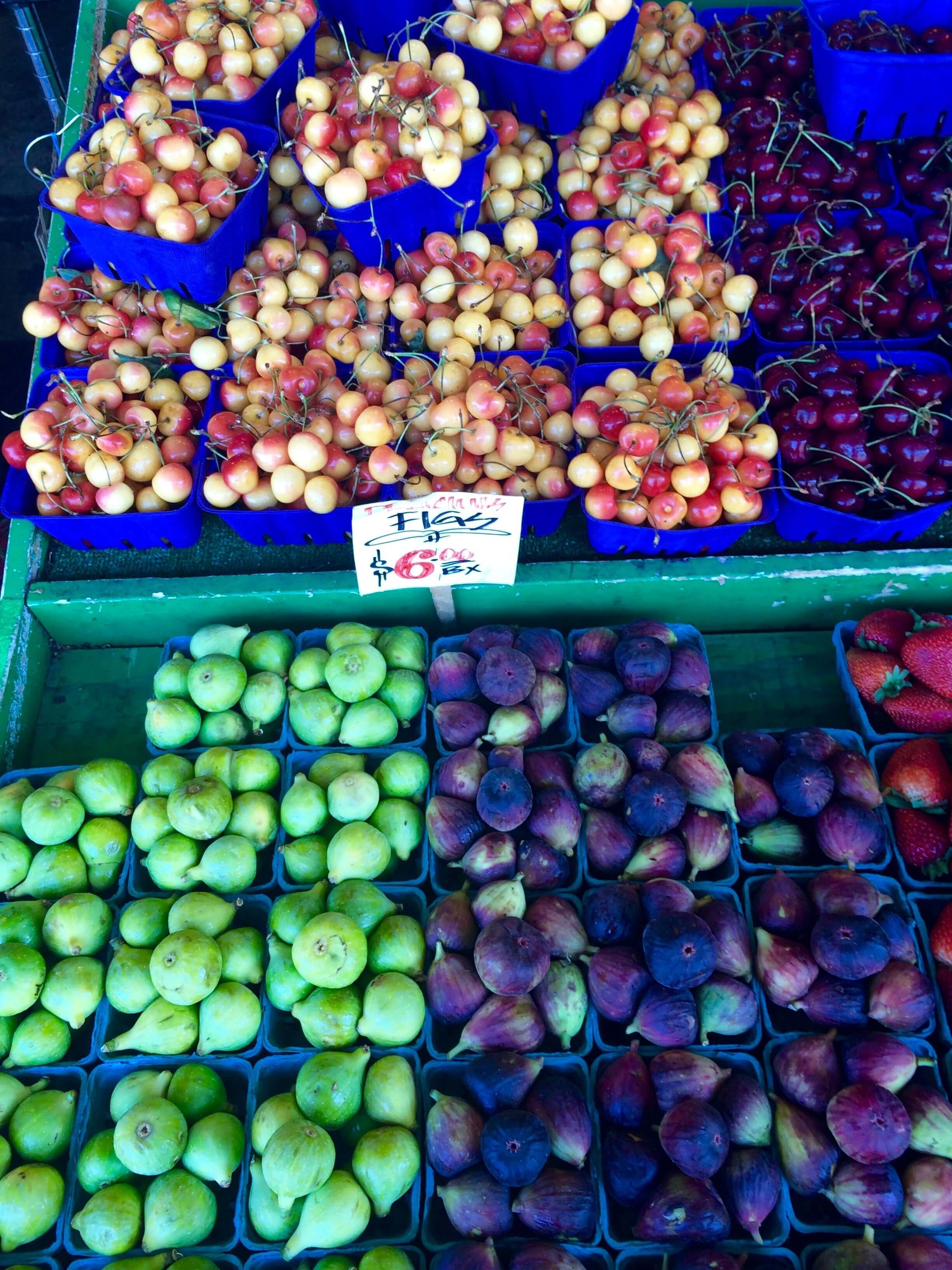
8: Other Cruciferous Vegetables
Calcium content: up to 4.8% DV
I know, dark leafy greens are technically cruciferous vegetables as well. However, given their difference in calcium levels, they deserved to be separated for the purposes of this list.
Whilst not as high as the dark leafy greens, these cruciferous vegetables are another good source of bio-available calcium for vegans.
Cabbage: 4.8% DV | Broccoli: 4% DV | Brussel Sprouts: 3.6% DV | Radish: 2.5% DV
Whether as a side dish, or incorporated in a main, these vegetables should be part of any well-balanced diet. Not just for the calcium content, but also for the many other nutritional benefits they have for the body.
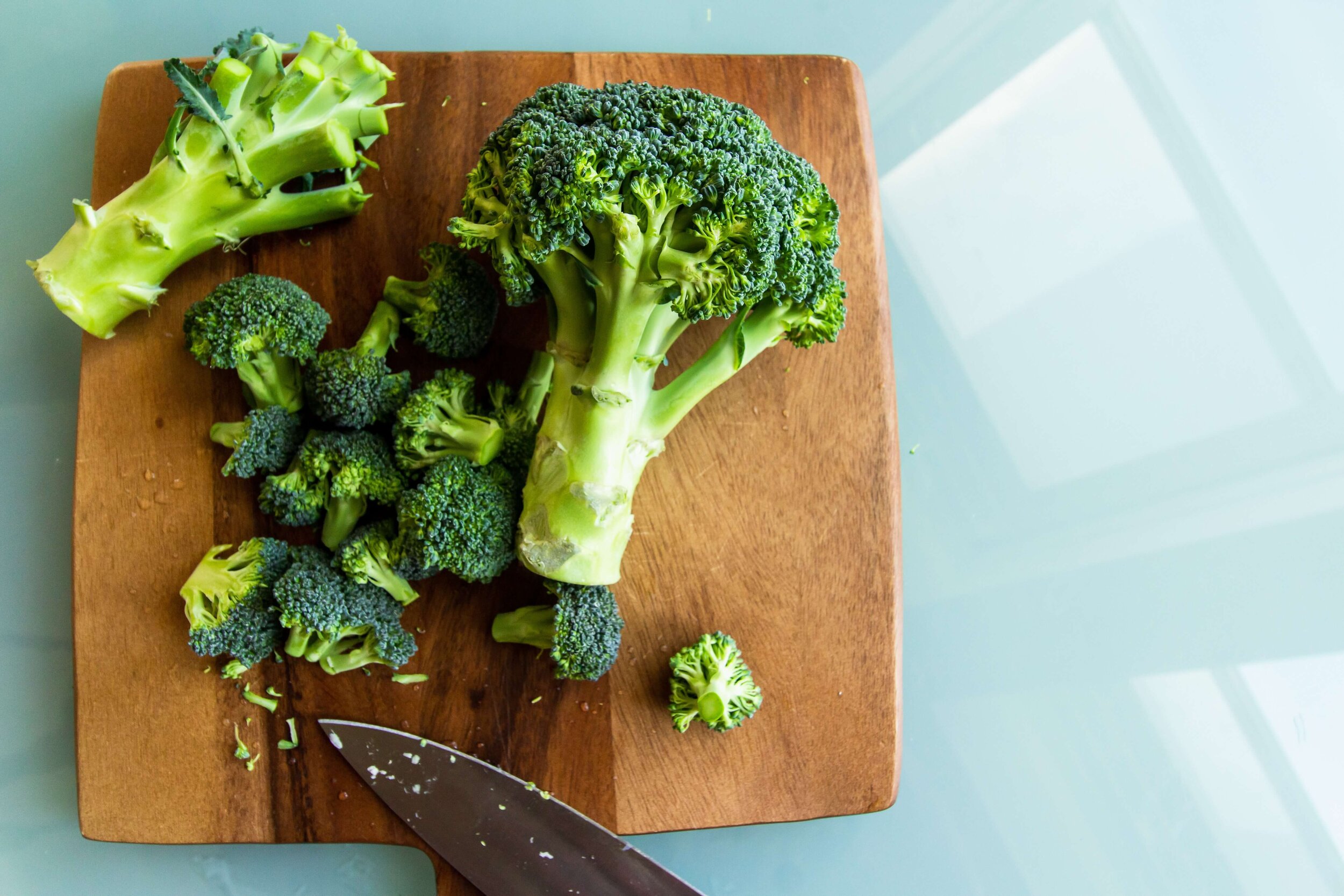
9: Chickpeas
Calcium content: 4.5% DV
Is there anything Chickpeas can’t do?
We all know chickpeas for their high protein and fibre content. What you may not have known is that they are also a great plant-source of calcium and magnesium!
What gives them the advantage over other types of beans and legumes is their higher amounts of bio-available calcium (as chickpeas have quite low oxalate levels).
Winged Bean: 14.2 % DV | White Bean: 7.3% DV | Black Bean: 6.9 % DV | Navy Bean: 6.9 % DV | Pinto Bean: 6.3% DV | Kidney Bean: 5.7% DV | Lentils: 1.9% DV
Some of these beans appear better sources of calcium than chickpeas on the surface with their higher DV%. However, after factoring in oxalates and absorption levels, chickpeas provide higher amounts of absorbable calcium.
Be sure to soak, ferment or cook these beans before consuming, as this boost their nutritional content and reduce their high oxalate level to increase the absorption of calcium [14, 15]:

10: Mushrooms
I know what you are thinking. What the hell Voach, mushrooms have no calcium – why are they on this list!
A vital factor in calcium intake is the role that Vitamin D plays in calcium absorption, which is a global problem in all age groups [16]. Certain studies have shown that up to 40% of US population are Vitamin D deficient [17] and about 1 billion people have low vitamin D levels as found in all ethnicities and age groups [18].
Sunlight can be a great source of Vitamin D. However, this can be a problem where sufficient sun exposure is difficult for people to achieve (a problem here in the UK for sure).
Accordingly, it is important to obtain Vitamin D through food to ensure you are maximizing the calcium that you are getting from the other foods on this list. This is where Mushrooms come in.
Brown Mushrooms: 319% DV | Maiitake Mushrooms: 280% DV | White Mushrooms: 262% DV | Portobello Mushrooms: 250% DV
As you can see, mushrooms are a tremendous source of Vitamin D and trumps even some of the more popular options for Vitamin D that you will see from other sources such as salmon, sardines, tuna and egg yolk.
Just be sure to look out for these types of mushrooms which have been treated with UV light, as otherwise the Vitamin D amount will be substantially lower than those shown above (other than the Maiitake Mushrooms).
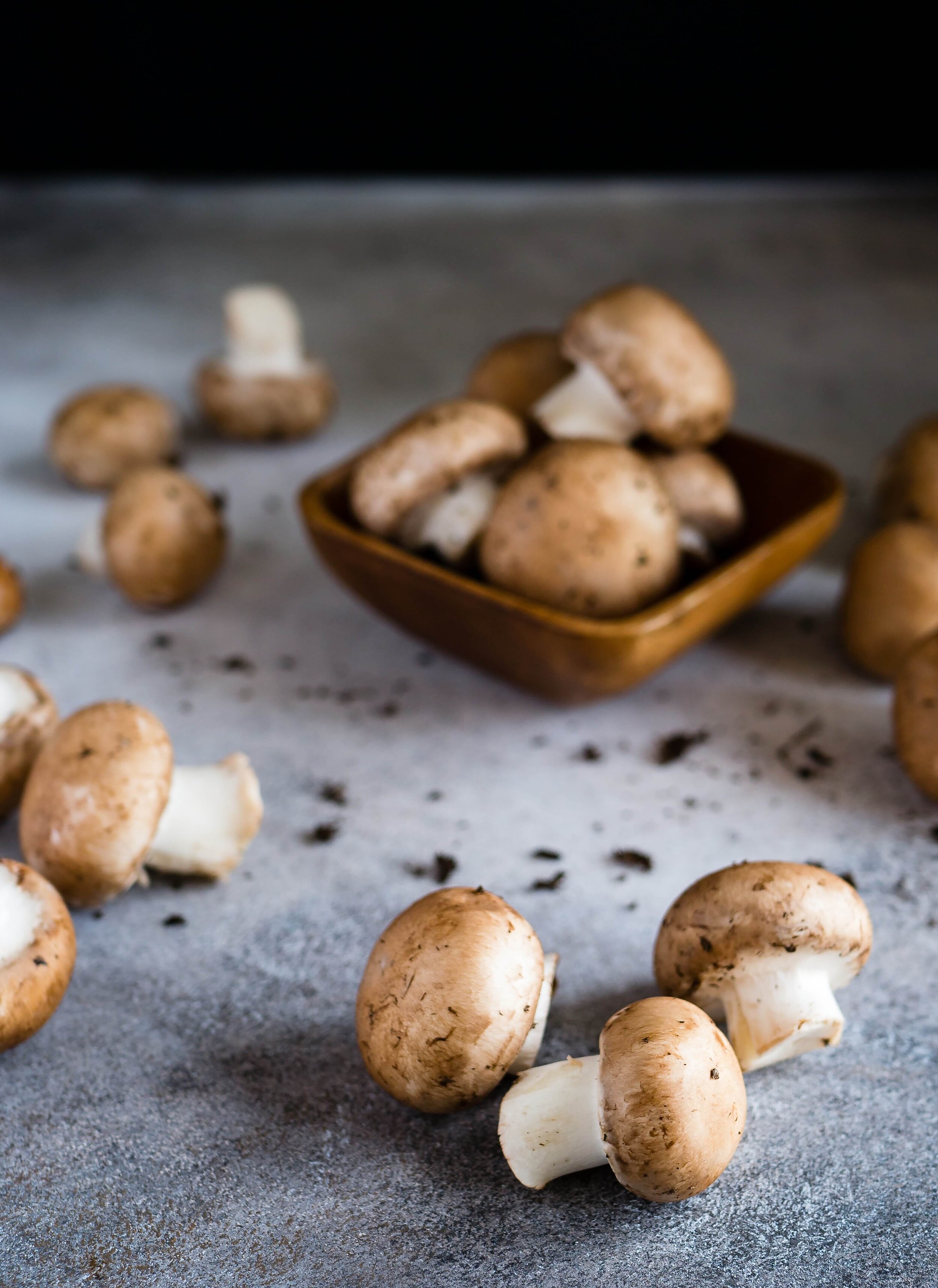
Top 5 Fortified Sources of Calcium
1: Vegan Cereals
Calcium content: up to 83.3% DV
Some foods and drinks will have calcium added during the manufacturing process and a good way to add more calcium into your diet.
Currently on market, there are a few vegan-friendly cereals which are fortified with a good amount of calcium. Otherwise, the calcium content will not be particularly high for your typical cereals at roughly 4% DV or under.
Barbara’s Bakery Puffins Multigrain: 83.3% DV | Fiber One Original Bran: 32.5% DV
In combination with fortified drinks such as soy milk, one bowl of cereal may provide a majority of your daily calcium intake just at breakfast!
2: Plant-Based Milks and Certain Juices
Calcium content: up to 24% DV
It is not just soy milk which is a great calcium-rich alternative to dairy milk. There are a variety of plant-based milks on the market now which are fortified with calcium – where some, such as Califia Farms Almond Milks, have 50% more bio-available calcium than dairy milk.
Don’t be fooled in only thinking plant-based milks are the only good source of calcium to drink. There are also a range of juices which are also fortified with calcium (I told you oranges would make another appearance on this list!).
Califia Farms Almond Milk: 24% DV | Pea Milk: 20% DV | Almond Milk: 18% DV | Oat Milk: 15% DV | Orange Juice: 14% DV | Hemp Milk: 12.5% DV | V8 Vegetable Juice: 12% DV | Rice Milk: 6.3% DV

3: Vegan Breads, Tortilla Wraps and Bean Pasta
Calcium content: up to 23.5% DV
I knew bread and wraps had some amount of calcium in them. However, I wasn’t aware how high the level of calcium were in certain products! You never saw TV ads about the amount of calcium that can be found in bagels or wraps being comparable to dairy milk and yogurt – might be a good marketing strategy for them in the future 😉
I had discussed bean pastas in a previous post regarding the best vegan sources of protein. Who would’ve thought they would make the list again! Seems like there’s nothing than bean pastas can’t do.
Edamame Pasta: 23.5% DV | Mission Flour Tortilla: 16% DV | Tortilla Land Corn Tortillas: 15% DV | Pita Bread: 12.5% DV | Thomas Bagels: 10.5% DV | Arnold Whole Wheat Bread: 9.3% DV
This should come as good news to those people who love to have their staple meals of sandwiches, wraps and pasta. Not only can you continue eating those foods you love, but you can also boost your daily calcium intake by choosing the right products such as those listed above.
In saying this, we recommend always checking the type of bread and wraps that you buy as not all of them are vegan – so keep this in mind when you are shopping.

4: Soy Yogurt
Calcium content: up to 20% DV
You may have seen this one coming. There are plenty of benefits with soy yogurt benefits compared to the dairy alternatives, and there is no exception when it comes to calcium. In fact, there are certain soy yogurt brands which have higher amounts of bio available calcium than the traditional dairy yogurts!
This occurs by the producers adding live bacterial cultures (derived from plant sources) to a base made from soybeans and blend the mixture with water and sugar and then fortify it with either tricalcium phosphate or calcium carbonate.
WholeSoy & Co. Plain Yogurt: 20% DV | Trader Joe’s Plain Yogurt: 17.6% DV | Silk Plain Yogurt: 15.3% DV | Alpro Plain Unsweetened Yogurt: 15% DV | Sojasun Plain Yogurt: 15% DV
As you can see, all the varieties of soy yogurt provide a high amount of calcium and so there is no great difference in which one you choose. Additionally, certain brands, such as Alpro soy yogurt, fortify their yogurt with Vitamin D as well to boost the calcium’s absorption level.
On top of the good amount of protein and other fortified vitamins such as B12, you know which type of yogurt you will be selecting in your next trip to the grocery store.
5: Vegan Energy Bars
Calcium content: up to 36.8% DV
When you think of vegan energy bars, you probably either think they are not that healthy for you, or are just a good source of protein.
Whilst that may sometimes be the case, there are certain vegan energy bars out there which are also packed with calcium.
Clif Builder’s Chocolate Mint Protein Bar: 36.8% DV | Cliff Bar Chocolate Peanut Butter: 8% DV | Nakd Cocoa Delight: 5.7% DV
This is not an exhaustive list by any means, but are just a few popular brand that you will commonly find in the grocery store to give you a good example of what to look for when making your next purchase.
Always do check the labelling, as there will be certain vegan energy bars that are not fortified with calcium.
BONUS: The Best Source of Calcium are
….
Herbs!
Calcium content: up to 224% DV
Yes. Herbs.
You wouldn’t have guessed that these tiny herbs pack more calcium than any other food on this list!
Hell, even two tablespoons of dried ground basil has almost the same amount of calcium as one cup of 1% milk! Amazing when you think about it.
Here are the calcium levels of some of the most popular herbs used today in ground form:
Basil: 224% DV | Thyme: 189% DV | Sage: 165% DV | Oregano: 160% DV | Mint: 134% DV | Rosemary: 128% DV
As you only have herbs as flavorings or as garnish, I chose not to include these in the top 15 list as you shouldn’t eat so much of these foods to obtain the daily amount of calcium you need. However, I love fun facts, and the fact that herbs are the most calcium-rich food we have certainly fits the bill.
So don’t hesitate using herbs on your next dish as you’ll be doing your bones a favor 😉

Conclusion
I hope this blog helps dispel the notion that dairy is the sole source of calcium and that you can get high, bio-available amounts of calcium in an array of healthy plant foods. So absolutely no need to worry about missing out on calcium if switching to a vegan diet!
This position is supported by multiple medical institution and professions, such as PCRM which has stated that the healthiest source of calcium are the foods mentioned in this list, such as dark leafy greens, rather than dairy products [19].
The safest bet is to always eat a well-planned and balanced whole-foods plant based diet which incorporates the foods mentioned in this list.
In this way, you will consume high amounts of bio-available calcium and ensure that you are ingesting the other vital nutrients which are abundant in plant foods (such as vitamin C, D, K potassium and magnesium) that work in conjunction with calcium and be able to Thrive With Compassion on a vegan diet.
And remember- when you make the choice to get your calcium from plants and live a vegan lifestyle, you are improving the health and well-being of not only for yourself – but for other people, the planet and the animals.
